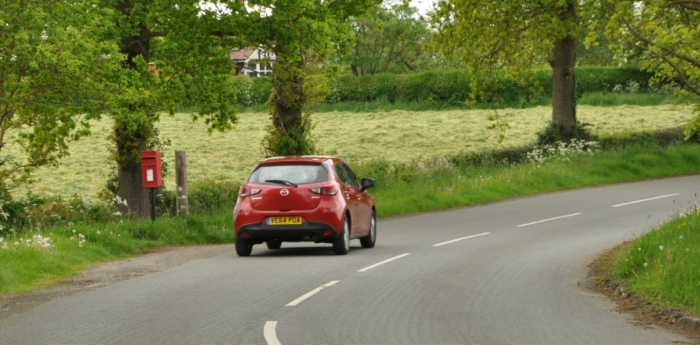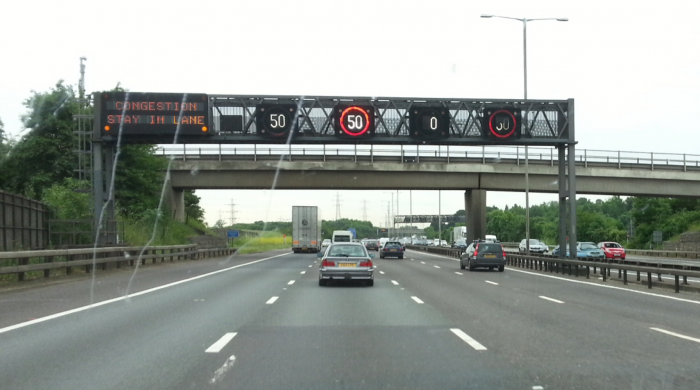What to do if you break down in your car
No matter how long you’ve been driving, whether it’s for many decades or just a few months, suffering a car breakdown is never a nice experience, but it can be even more stressful and scary for young or newly-qualified drivers.
Normal A & B roads plus country lanes
Where to stop
If possible, bring your car to a stop off the road or at least somewhere sensible, where it won’t block or pose a danger to other road users.
Breaking down in awkward places
It doesn’t happen very often, but if you break down in an awkward place like on a roundabout, a street corner or at a junction controlled by traffic lights, try to keep a cool head, exit the car in the safest way possible and phone for breakdown assistance

Warning other motorists
Hazard lights need switching on straight away and if it’s dark you should leave your sidelights on, but not the full beam headlights as they could dazzle other traffic. If it’s foggy, keep the front and rear fog lights switched on.
If you want to be really safety-minded, keep a reflective jacket in your car, along with a warning triangle that can be placed 50 metres behind the car providing it’s safe to do so. Warning triangles should not be used on motorways, though. Keeping a snack that won’t go off for a long time, such as flapjack, and also a cold drink and a blanket in your car will be a real comfort if you get stranded.
Getting help
Phone your breakdown provider (or a parent, guardian or friend if you’re not covered) and wait patiently somewhere safe and near your car. If you’re stuck in the middle of nowhere or in an area that feels a bit dodgy, it may be safer to wait inside the car and lock the doors but use common sense. Did you know that we offer breakdown cover too which can be bought at any time – find out more?
Breaking down on standard motorways
Where to stop
The Highway Code technically tells drivers to exit the motorway at the next exit or to stop at the next services, but it’s not always possible to do so, in which case the hard shoulder is the only option.
What if you can’t pull over?
If your car breaks down in one of the motorway’s active or ‘live’ lanes and it’s not possible to move over to the hard shoulder, maybe because there isn’t one, it’s important to switch the hazard lights on immediately but remain in the car with your seatbelt fastened, no matter how scary that sounds.
Hard shoulder safety
Use your mirrors before pulling over to the hard shoulder as smoothly as possible, avoiding cutting any other vehicles up and watching out for any debris. Park as far to the left as you can, with the wheels turned away from traffic, so that your car won’t be pushed into other vehicles if someone runs into the back of you on the hard shoulder. For this same reason, it’s advisable to get out of your car, whatever the weather. Exit out of the side which is away from passing traffic and move to somewhere safe, ideally behind the barrier. It will feel wrong, but any pets should be left inside the car.
Phoning for help
It’s recommended to use the nearest orange emergency telephone to call for help, as it’s easier for the police or Highways England who answer the phone to be able to pinpoint your location. Emergency phones are free and shouldn’t be too far away, but you can use your mobile phone as a backup for contacting your breakdown provider and, of course, for updating loved ones.
Where to wait
Once you know help is on the way, walk back to your car but wait on the other side of the metal barrier where it’s safer, ideally up the embankment. The only time you should get back in your car while waiting for assistance to arrive is if you feel in danger. In such a situation, sit in the front passenger seat with the belt fastened. Don’t attempt to fix your car yourself, not even trying to change a tyre, as the hard shoulder is a dangerous place to be.
Extra advice for young drivers
You might find that someone stops and offers to help look at your car, but you don’t know their real motives or skill set, so even though they may have a heart of gold, it’s best to politely decline their assistance and wait for the breakdown people to arrive.
It’s also common for independent, self-employed breakdown trucks to pull up behind broken-down cars on the hard shoulder, offering to help there and then. It might be tempting to say yes, especially if your breakdown provider can’t get to you quickly, but these chancers often charge expensive fees and you don’t really know who they are.
Smart motorways
What are they and where should you stop?
This kind of motorway has signs displaying variable speed limits and either allows vehicles to drive on the hard shoulder at certain times, or doesn’t have a hard shoulder at all. A speed limit displayed above the hard shoulder means it’s been opened up as an extra lane, but a red cross over it means it’s currently serving as a hard shoulder. Anyone whose car breaks down on a smart motorway with all four lanes in use should if possible keep driving until they reach the next emergency refuge area, shown by a blue sign with an orange SOS telephone symbol.

What if your car won’t budge?
If your car won’t make it as far as the next emergency refuge area, you may need to stop on the hard shoulder, if it’s got a red cross over it, or on the grass verge. If you can’t see either of these, you’ll have to stop on the inside lane if possible. If your car breaks down in lane 2, 3 or 4 and it’s not possible to go any further, you’ll have to stop where you are and stay in the vehicle with your seatbelt fastened.
Words of comfort
Make sure your hazard lights are switched on immediately. Dial 999 and wait for assistance, reassured by knowing that smart motorways are monitored by loads of cameras, one of which will quickly spot that you’ve broken down and will close the lane you’re in, for the safety of you and others.
Hopefully you’ll never experience a break down at all during your driving career, but it’s useful to brush up on what to do just in case.